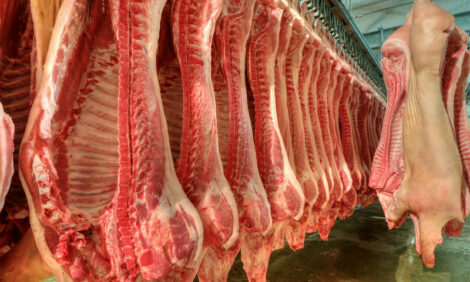



Cruise Company Eliminates Sow Stalls from Supply Chain
US - The Humane Society of the United States applauds Royal Caribbean Cruises Ltd., the world’s second-largest cruise operator, for its announcement that it will eliminate controversial gestation crates—cages used to confine breeding pigs—from its pork supply chain, becoming the latest in a growing list of major food companies to address this issue.Royal Caribbean Cruises Ltd. is a global cruise vacation company that owns Royal Caribbean International, Celebrity Cruises, Pullmantur, Azamara Club Cruises and CDF Croisières de France, as well as TUI Cruises through a 50 percent joint venture. In 2011, the Miami-based cruise line’s 41 ships served more than 20 million guests globally.
“Royal Caribbean is committed to keeping the treatment of animals in consideration when supplying our fleet with food,“ said Michael Jones, vice president of supply chain management for Royal Caribbean Cruises Ltd. “Royal Caribbean supports the pork industry’s work to eliminate gestation crates from operation by 2022, and our company has set that date as our target for having a gestation crate-free pork supply chain.“
The Humane Society of the United States supports Royal Caribbean’s progress.
“Royal Caribbean has a long-standing animal welfare program and has been a good partner in working toward improved conditions for animals,“ stated Matthew Prescott, food policy director for The HSUS. “By eliminating gestation crates, Royal Caribbean is taking a positive step away from a practice that people and companies worldwide have condemned.“
The similar announcements made recently by McDonald’s, Burger King, Wendy’s, Costco, Safeway, Kroger, Oscar Mayer, Sysco, Carnival Cruise Lines and other leading food companies signal a reversal in a three-decade-old trend in the pork industry that leaves most breeding pigs confined day and night in gestation crates during their four-month pregnancy. These cages are roughly the same size as the animals’ bodies and designed to prevent them from even turning around. The animals are subsequently transferred into another crate to give birth, re-impregnated, and put back into a gestation crate. This happens pregnancy after pregnancy for their entire lives, adding up to years of virtual immobilization. This confinement system has come under fire from veterinarians, farmers, animal welfare advocates, animal scientists, consumers and others.







